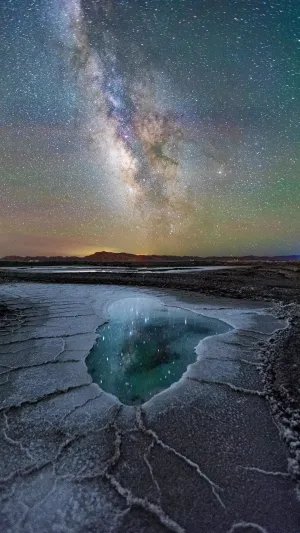There are many lakes in the world. These lakes can be divided into freshwater lakes and saltwater lakes according to the amount of salt in the lake. Among them, more than 35 % of the salt content is called salt lake.
Salt Lake is a kind of saltwater lake, and it is a lake with high salinity in arid areas. The mineralization of freshwater lakes is less than 1 gram/liter, salted water lake is more than 1 gram/liter, and salt lakes with a degree of mineralization greater than 35 grams/liter.
Salt Lake is the product of the development of the lake. It is rich in a variety of salt and is an important mineral resource.
About 200 kinds of salt minerals are deposited in the salt lake. Humans have mined a large number of alkali, potassium, lithium, magnesium, boron, gypsum, medical silt, and other basic chemical industry, agriculture, light industry, metallurgy, construction, and other important raw materials from the salt lake.
The formation of the salt lakes requires certain natural conditions, the most important of which are the following three points:
1. Drought or semi-drought climate.
Under drought or semi-drought climate, the evaporation of lakes often exceeds the amount of supply of the lake. The lake water is constantly condensed, and the amount of salt contains increases so that various elements in the water reach a saturated or overly saturated state.
2. Closed terrain.
The closed terrain brings the runoffs in the watershed to the lake. The lake water does not leak, and the salt is continuously transported from the lake through the runoff sources to the lake through the runoff. Under the strong evaporation effect, the lake is getting salty, and more salt accumulates.
3. Salt substances enter the lake.
The sources of salt in different salt lakes are diverse, but they all need rich salt substances to be remitted into the lake to ensure that the salt lake has a certain salinity.
Salt Lake not only provides people with a variety of mineral resources but also is admired for its beauty. What is it about the salt lake that makes it nature's palette?
First, thanks to its causes. Because the evaporation of salt lake water in arid and semi-arid regions is greater than or equal to precipitation and replenishment, the water contains a high concentration of salt.
It is the difference in salinity caused by the evaporation of water during its formation that gives the lake its different colors. Salt crystals formed in some of the lakes also give the surface texture and joints, which, unlike normal lake surfaces, show a colorful image when light is refracted.
Second, many of the colors in the salt lake come directly from the living things in it, such as microbes and algae. Their presence makes the salt lake even more colorful. For example, Senegal, a West African country on the Atlantic Ocean, has a famous salt lake called Lake Rose.
The lake, which covers an area of 3 square kilometers, is pink, especially from December to January. Its pink color is so attractive that it gives the lake its name.
The mystery of Rose Lake's color has been solved by microbiology experts. The mineral composition of the soil in the salt lake, the depth of the water level, and other differences in the natural environment will affect the color of the salt lake. The effect of many factors makes salt lake colorful and beautiful.
The salt lake is a natural laboratory, the salt lake is also a carbon deposition pool, and a natural bioreactor. The sedimentary area of the salt lake accounts for a considerable amount of the world's land surface area. A large amount of carbonate deposition in the salt lake can delay the greenhouse effect associated with humans to some extent.





